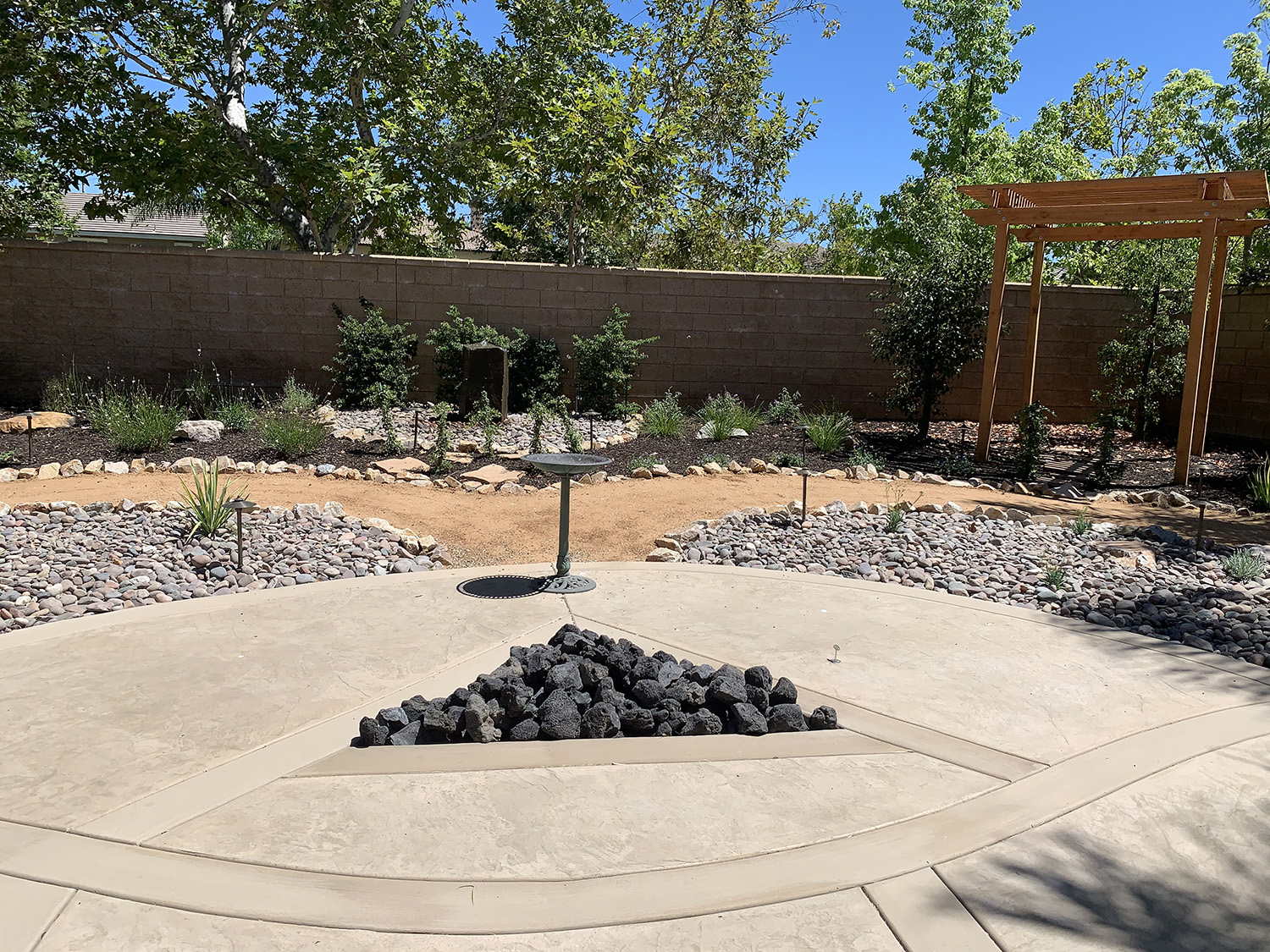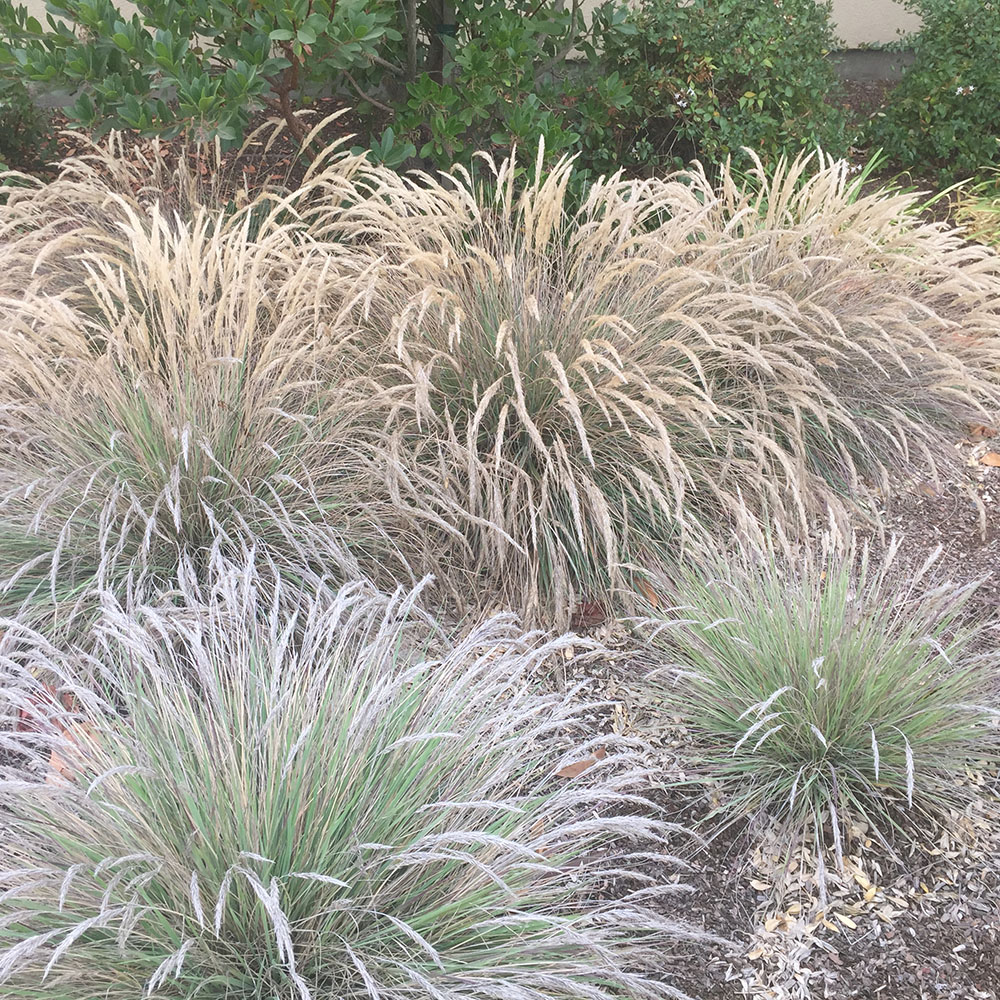What is Drought Tolerant Landscaping (Xeriscape)?
Definition and Concept
Drought tolerant landscaping, also known as xeriscaping, is a landscaping method designed to reduce water usage by utilizing plants and materials that require minimal water. This type of landscaping is particularly beneficial in arid regions or areas experiencing prolonged drought conditions. At McCabe’s Landscape, we specialize in designing, constructing, and maintaining drought-tolerant landscapes throughout the Temecula Valley.
Key Components of Drought Tolerant Landscape Design
Drought-tolerant landscaping involves selecting plants that thrive with minimal water, using efficient irrigation systems, and incorporating hardscape elements like rocks and gravel to reduce water needs. This approach not only conserves water but also reduces maintenance costs and enhances the aesthetic appeal of your outdoor space.
Benefits of Drought Tolerant Landscaping
Adopting drought-tolerant landscaping offers numerous advantages, including water conservation, reduced water bills, lower maintenance, and increased resilience to drought conditions. By choosing drought-tolerant plants and efficient irrigation methods, homeowners can create beautiful, sustainable landscapes that withstand dry periods and require less water overall.
Why Choose Drought Tolerant Landscaping?
Water Conservation and Cost Savings
Water conservation is a critical benefit of drought-tolerant landscaping. By reducing water usage, homeowners can significantly lower their water bills. Drought-tolerant plants require less frequent watering, helping to conserve this precious resource. McCabe’s Landscape can design a landscape that minimizes water usage while maintaining beauty and functionality.
Efficient Water Usage
Implementing an efficient irrigation system, such as drip irrigation, ensures that water is delivered directly to the plant roots, minimizing water loss due to evaporation. This targeted approach helps conserve water and supports the health of drought-tolerant plants.
Reduced Water Bills
Lower water usage directly translates to reduced water bills. Homeowners can often realize a savings by switching to drought-tolerant landscaping. Over time, the cost savings from reduced water consumption can offset the initial investment in landscape design and installation.
Low Maintenance and High Resilience
Drought-tolerant landscapes are designed to be low maintenance, requiring less frequent watering, mowing, and fertilizing. This not only saves time but also reduces the need for chemical inputs, making your garden more environmentally friendly.
Less Frequent Watering
Drought-tolerant plants are adapted to thrive with minimal water, which means they require less frequent watering. This is particularly advantageous in regions with water restrictions or during periods of drought.
Reduced Need for Chemicals
With lower maintenance requirements, drought-tolerant landscapes typically need fewer chemical fertilizers and pesticides. This promotes a healthier environment and reduces the risk of chemical runoff into local water sources.
Aesthetic Appeal and Biodiversity
Drought-tolerant landscapes can be visually stunning, featuring a variety of textures, colors, and forms. Incorporating native plants and drought-tolerant species enhances biodiversity, providing habitats for local wildlife and promoting a balanced ecosystem.
Diverse Plant Selection
Selecting a variety of drought-tolerant plants, including succulents, ornamental grasses, trees, flowers and shrubs, creates a dynamic and attractive landscape. California-friendly plants are particularly beneficial as they are adapted to local conditions and support local wildlife.
Enhanced Wildlife Habitat
By using native and drought-tolerant plants, you can create a landscape that supports local wildlife, including birds, butterflies, and beneficial insects. This contributes to a healthier and more vibrant ecosystem.

How to Create a Drought Tolerant Landscape
Planning and Design
Creating a drought-tolerant landscape begins with careful planning and design. At McCabe’s Landscape, we work with you to develop a customized plan that meets your aesthetic preferences and water-saving goals.
Assessing Your Site
The first step in designing a drought-tolerant landscape is to assess your site’s conditions, including soil type, sunlight exposure, and existing vegetation. This helps determine the most suitable plants and materials for your landscape.
Designing for Water Efficiency
A key aspect of drought-tolerant landscaping is designing for water efficiency. This involves grouping plants with similar water needs, using efficient irrigation systems, and incorporating hardscape elements to reduce water usage.
Selecting Drought-Tolerant Plants
Choosing the right plants is crucial for a successful drought-tolerant landscape. California-friendly suculents, and other drought-resistant species are ideal choices for creating a low-water-use garden.
Plants and Succulents
California-friendly plants are well-adapted to local conditions and require minimal water once established. Succulents, such as agave and cacti, store water in their leaves, making them excellent choices for drought-tolerant landscapes.
Drought-Tolerant Shrubs and Grasses
Incorporating drought-tolerant shrubs and ornamental grasses adds structure and texture to your landscape. Species like Russian sage and Verbena are not only drought-tolerant but also add color and interest to your garden.
Efficient Irrigation Techniques
Efficient irrigation techniques are essential for maintaining a drought-tolerant landscape. Drip irrigation and other water-efficient methods ensure that plants receive the necessary moisture without wasting water.
Drip Irrigation Systems
Drip irrigation systems deliver water directly to the plant roots, minimizing evaporation and runoff. This method is highly efficient and supports the health of drought-tolerant plants.
Watering Schedules
Establishing a proper watering schedule is crucial for the success of a drought-tolerant landscape. Watering deeply and infrequently encourages deep root growth and increases drought resistance.
Mulching and Soil Management
Mulching and proper soil management help retain moisture and improve soil health. Using organic mulch and incorporating compost can enhance water retention and support plant growth.
Benefits of Mulching
Mulching around plants helps retain moisture, suppress weeds, and regulate soil temperature. Organic mulches, such as bark, decompose over time, adding organic matter to the soil.
Soil Improvement
Improving soil health with compost and other organic matter increases its ability to retain moisture. Healthy soil supports robust plant growth and enhances the resilience of your drought-tolerant landscape.
FAQs about Drought Tolerant Landscaping
What is a drought-tolerant landscape?
A drought-tolerant landscape is designed to thrive with minimal water. It involves selecting plants and materials that require less water and incorporating efficient irrigation systems to conserve water.
How can drought-tolerant landscaping save water?
Drought-tolerant landscaping saves water by using plants that require minimal watering, implementing efficient irrigation techniques, and reducing water loss through mulching and soil management.
What are some examples of drought-tolerant plants?
Examples of drought-tolerant plants include succulents like agave and cacti, native plants, ornamental grasses, and drought-tolerant shrubs like Russian sage and Verbena.
Why is mulching important in a drought-tolerant landscape?
Mulching is important because it helps retain moisture, suppress weeds, and regulate soil temperature. It also adds organic matter to the soil, improving its water retention capabilities.
How does McCabe’s Landscape help with drought-tolerant landscaping?
McCabe’s Landscape specializes in designing, constructing, and maintaining drought-tolerant landscapes in the Temecula Valley. We offer customized solutions to help homeowners conserve water and create beautiful, sustainable outdoor spaces. Contact us today to learn more!



